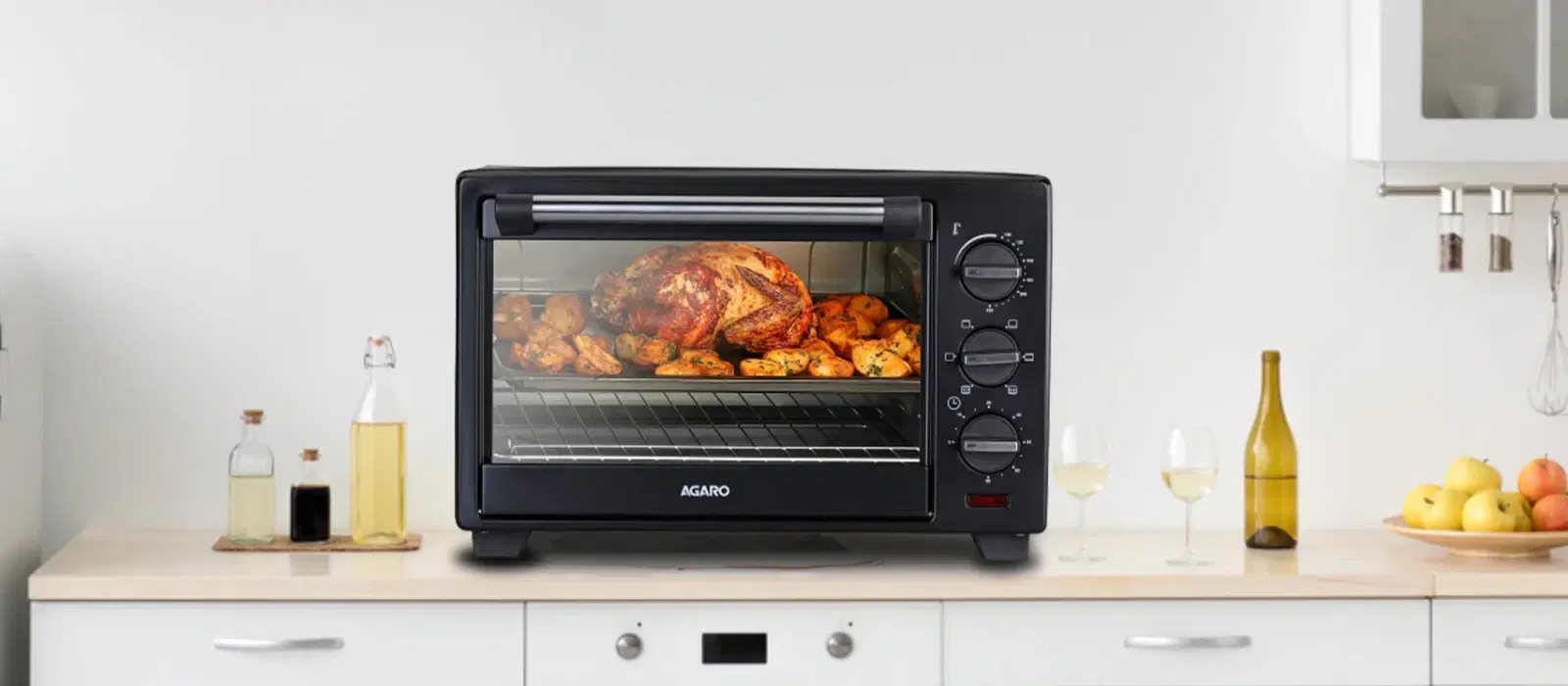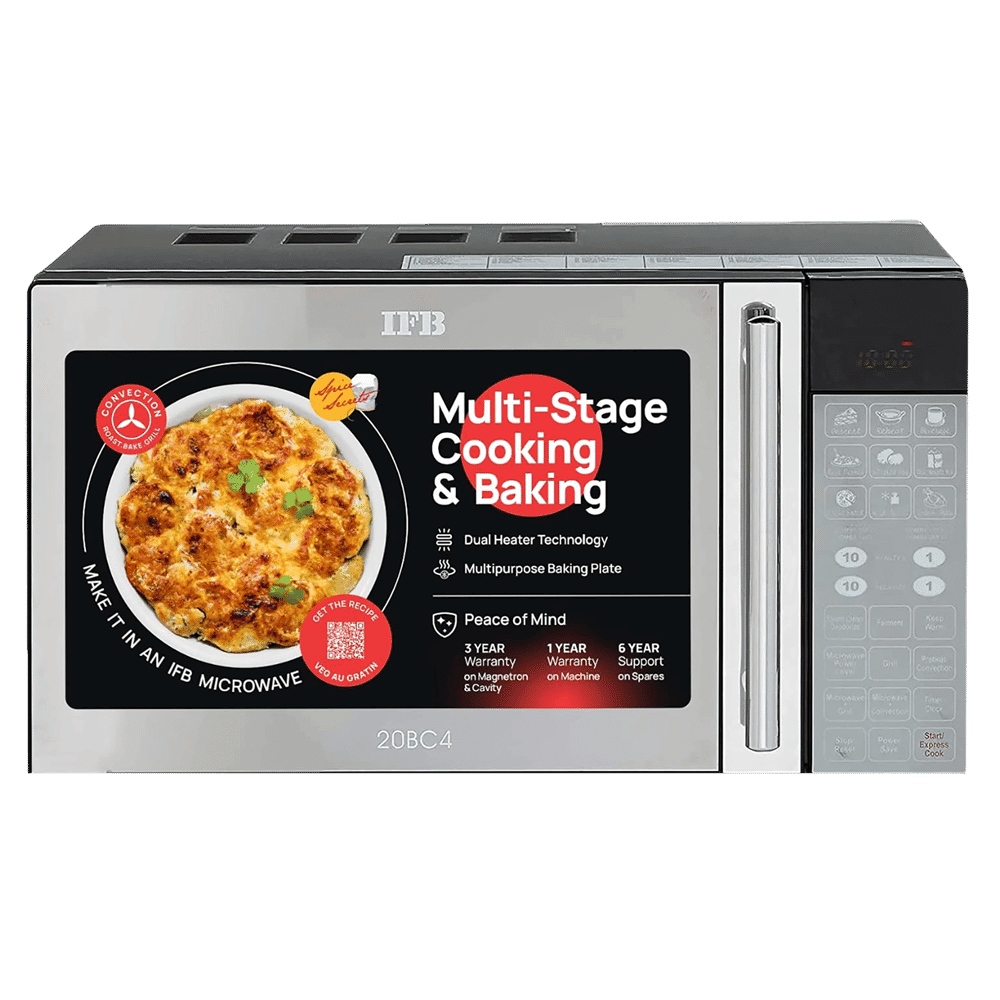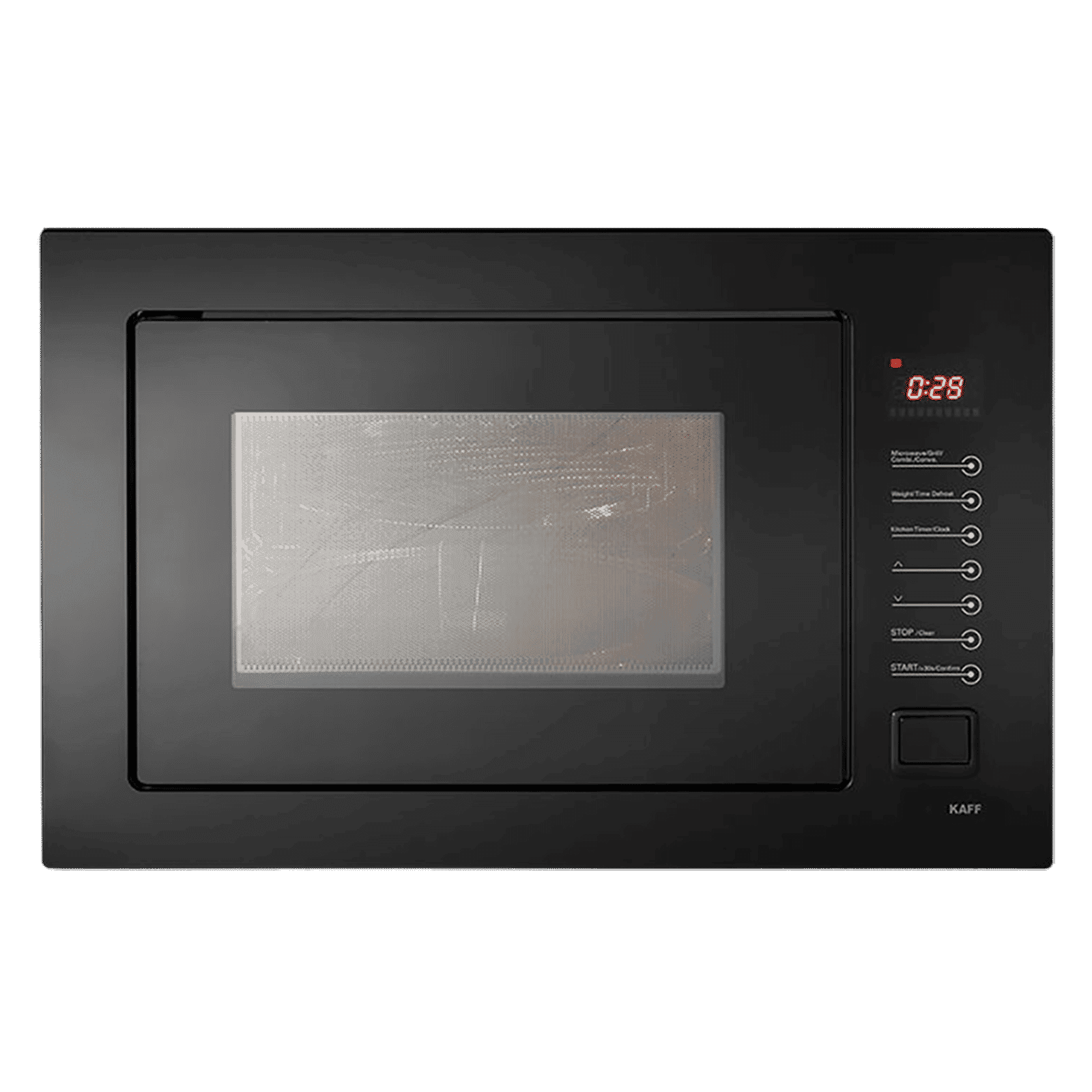
Home Appliances
•05 min read

Buy IFB 30FRC2 30L Convection Microwave Oven with 101 Autocook Menus (Black Floral) online at best prices from Croma. Check product details, reviews & more. Shop now!
Choosing the perfect microwave oven isn’t just about features—it’s about finding the right fit for your space and lifestyle. When it comes to micro oven dimensions, understanding the measurements helps you maximise your kitchen's efficiency, ensuring your appliance is both functional and harmonious with your home. This blog guides you through measuring your space and matching it with the ideal micro oven dimensions, whether you favour a compact, built-in, or countertop option.
Every kitchen is unique in size and layout. By carefully considering micro oven dimensions, you can optimise your available space. A microwave that fits well in your kitchen not only looks good but also prevents overcrowding, allowing you to keep your countertop or built-in area clean and organised. Avoiding the purchase of a microwave that is either too large or too small can be crucial to creating a balanced setup where every appliance has its proper place.
Not only do dimensions affect how well your kitchen functions, but they also determine whether the microwave complements other appliances. For instance, a built-in microwave needs to accord with the cabinet space, while a countertop model should provide enough clearance for ventilation. Incorrect sizing can lead to inconvenience, such as crowded countertops or a cramped built-in space that may impede performance or even safety.
Your go-to option for ease of use, countertop microwaves come in a variety of sizes. Typically, these appliances offer dimensions that balance compact design with functionality. Small microwave dimensions are ideal for limited spaces, while larger models may cater to families with significant cooking needs. When considering countertop microwave dimensions, ensure you have sufficient surrounding space for proper ventilation and ease of access.
Built-in microwaves are designed to integrate seamlessly into your kitchen cabinetry. Their dimensions are often tailored to standard cabinet sizes, ensuring a sleek, harmonious look. While the overall structure might be similar, small adjustments in sizing make a big difference in how well the microwave blends into your design. Always check the standard microwave dimensions provided by the manufacturer to guide your cabinet space planning.
For those tight on space or living in smaller apartments, compact microwaves are a boon. These models feature reduced dimensions measured in inches, centimetres, and millimetres, making them easily adaptable to small kitchens. Despite their smaller physical footprint, many compact microwaves still offer excellent performance for everyday use.
If you have a big family or entertain frequently, a larger microwave is an ideal option. These devices typically offer more internal capacity, and their dimensions reflect a balance between additional features and ample space for larger dishes. Comparing small microwave dimensions to large microwave dimensions can help you decide if extra capacity and functionality outweigh the benefits of a more compact design.

Buy IFB 20L Convection Microwave Oven with 71 Autocook Menus (20BC4, Black) online at best prices from Croma. Check product details, reviews & more. Shop now!
Before making a purchase, understanding how to measure your current space and the appliance is vital. Begin by measuring the height, width, and depth of your potential micro oven area. Don’t forget to consider ventilation needs—maintaining the recommended clearance from surrounding surfaces ensures proper heat dissipation. Also, think about the available width between cabinets or on a countertop to prevent any installation issues.
Space requirements for microwaves are essential for safe operation and longevity. For example, a countertop microwave typically requires at least 3 inches of clearance on all sides, plus an extra inch above for ventilation. This extra space helps prevent overheating and maintains the appliance's performance. For built-in models, it's essential to consider the depth specifications and ensure the cabinetry allows for a proper fit while maintaining airflow.
Pro Tip from Tata Neu
Always leave at least 3 inches of clearance around your microwave for ventilation. This prevents overheating and ensures optimal performance.
Your kitchen size plays a significant role in determining the optimal micro oven dimensions. For small kitchens, opting for compact microwave measurements ensures you get functionality without sacrificing valuable counter space. Medium-sized kitchens may benefit from standard microwave dimensions, which offer a balance of capacity and practicality. In larger kitchens, you can comfortably opt for large microwave dimensions, providing additional capacity without compromising the overall design.
Family size and cooking habits are key factors when selecting a microwave. A busy household with frequent meal preps may require a model with generous internal space, leaning towards built-in or large microwave dimensions. Conversely, for single individuals or small families, compact or small microwave dimensions are typically adequate. Balancing features such as wattage and capacity with size allows you to select the perfect model to meet your cooking needs.
It’s essential to reconcile desired features with the available dimensions. For instance, higher wattage and varied cooking modes often come with larger internal capacities. When comparing a compact microwave to a larger model, consider not just the physical space but also how performance features align with your culinary requirements. Striking a balance maximises both usability and kitchen aesthetics.
A common oversight is disregarding the extra space necessary for proper ventilation. Without enough clearance, your microwave’s performance and longevity can be compromised. Always factor in the manufacturer's recommended space, ensuring you meet the safety and operational parameters.

Buy KAFF KMW8A 25L 60cm Built-in Microwave with Multi Programming Mode (KMW8A-BLK, Black) online at best prices from Croma. Check product details, reviews & more. Shop now!
Another mistake is choosing a microwave that is either too large or too small without due consideration of your cooking habits. Overestimating may lead to wasted space, while underestimating could result in insufficient capacity for your needs. A thorough evaluation of your kitchen layout and routine ensures an optimal fit.
Rushing into a purchase without precise measurements can lead to inconvenience. Always measure your available area beforehand to align with the micro oven dimensions provided by the manufacturer. If in doubt, consulting customer support or expert guidance can save you time and potential hassle later.
The dimensions of an oven range microwave typically range between 29 to 30 inches in width, 15 to 17 inches in height, and 16 to 18 inches in depth.
Yes, the difference lies in capacity. A 1.7 cubic foot microwave suits compact spaces, while a 1.9 cubic foot model offers more room for larger dishes.
Use a measuring tape to record the height, width, and depth of your appliance, ensuring to add extra clearance space for proper ventilation.
Standard dimensions for microwave cabinets typically range from 24 to 30 inches in width, 15 to 18 inches in height, and 20 to 24 inches in depth, varying by model.
A countertop microwave generally requires about 3 inches of clearance on all sides, with an extra clearance of 1 inch above for sufficient ventilation.
Understanding micro oven dimensions is fundamental to creating a safe and efficient kitchen. When you know the space requirements and standard measurements available for different microwave types, making an informed decision becomes straightforward. By measuring accurately and comparing your options, you can select a microwave that fulfills your unique culinary needs while seamlessly fitting into your available space. This balanced approach not only enhances your kitchen’s practicality but also reinforces a smart purchasing decision that brings both functionality and style into your home.
With a careful selection process, you ensure that every investment in your kitchen is a step towards a more organised and rewarding culinary experience. Explore further guidance and product insights on Tata Neu, where smart shopping meets effortless convenience, and each purchase further rewards you with NeuCoin benefits.